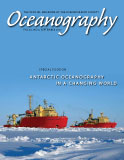First Paragraph
Last year I traveled to Bangkok, Thailand, for the second Asia Pacific Adaptation Forum, which was called off at the last minute due to the city’s worst flooding in the past 50 years. Bangkok, an urban center of great wealth in a relatively rich country, showed itself to be quite vulnerable to climate impacts. The flooding caused 815 deaths, massive displacements of population, and $45 billion in economic damage, including lasting damage to its automobile and electronics supply chains. Similarly, the landfall of Hurricane Katrina in New Orleans, Louisiana, in 2005 caused 1,836 deaths and $81 billion in damage. Thus, while it is certainly true that development can ameliorate some aspects of climate change vulnerability, we surely should not be fooled into thinking that development, sustainable or not, comprises the entire solution to the climate change adaptation challenge. At the very least, developing countries can find, and are finding, new development pathways that avoid some of the maladaptation that has already occurred in the developed world. Additionally, developing and developed countries alike can benefit from improving ecosystem management as an integral part of policies to help reduce vulnerability and increase resilience in the face of climate change.

